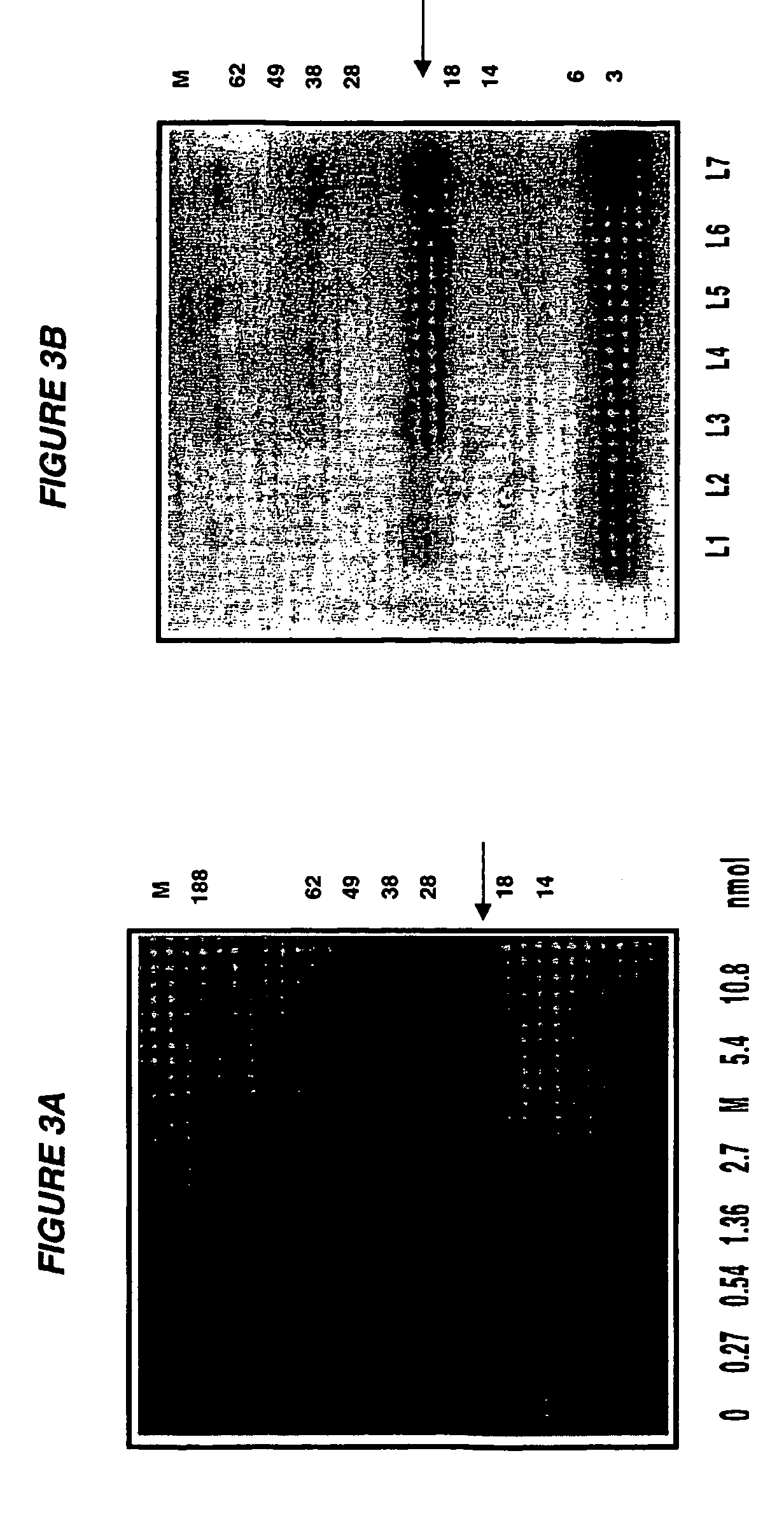ADP-ribosylating bacterial toxins
a technology of ribosylated toxins and adpribosylated bacterial toxins, which is applied in the field of adpribosylated bacterial toxins, can solve the problems of protein retention of toxic activity in vaccines, and achieve the effect of efficient harvesting and facilitating the isolation and purification of recombinant proteins
- Summary
- Abstract
- Description
- Claims
- Application Information
AI Technical Summary
Benefits of technology
Problems solved by technology
Method used
Image
Examples
Embodiment Construction
obe should be complementary to the coding sequence; single-stranded cDNA is complementary to mRNA, and so a cDNA probe should be complementary to the non-coding sequence.
[0197]The probe sequence need not be identical to a sequence (or its complement)—some variation in the sequence and length can lead to increased assay sensitivity if the nucleic acid probe can form a duplex with target nucleotides, which can be detected. Also, the nucleic acid probe can include additional nucleotides to stabilize the formed duplex. Additional sequence may also be helpful as a label to detect the formed duplex. For example, a non-complementary nucleotide sequence may be attached to the 5′ end of the probe, with the remainder of the probe sequence being complementary to a bacterial sequence. Alternatively, non-complementary bases or longer sequences can be interspersed into the probe, provided that the probe sequence has sufficient complementarity with the a bacterial sequence in order to hybridize th...
PUM
| Property | Measurement | Unit |
|---|---|---|
| size | aaaaa | aaaaa |
| Tm | aaaaa | aaaaa |
| exposure time | aaaaa | aaaaa |
Abstract
Description
Claims
Application Information
 Login to View More
Login to View More - R&D
- Intellectual Property
- Life Sciences
- Materials
- Tech Scout
- Unparalleled Data Quality
- Higher Quality Content
- 60% Fewer Hallucinations
Browse by: Latest US Patents, China's latest patents, Technical Efficacy Thesaurus, Application Domain, Technology Topic, Popular Technical Reports.
© 2025 PatSnap. All rights reserved.Legal|Privacy policy|Modern Slavery Act Transparency Statement|Sitemap|About US| Contact US: help@patsnap.com



